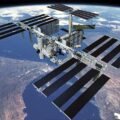Using the Gemini South Telescope in Chile, an international team of scientists have successfully analyzed the chemical makeup of an exoplanet’s atmosphere. This measurement is the first of its kind, which astronomers say is a key milestone in the search for extraterrestrial life.
BACKGROUND: EXOPLANET’s Atmosphere DETECTION
To date, astronomers have discovered over 4,000 confirmed exoplanets. But due to limitations of current telescopes, the atmosphere’s of these space bodies has been nearly impossible to measure. The once cutting edge Hubble Telescope has performed admirably, but its instruments can only spot oxygen at interstellar distances, and is unable to zero in on the details of carbon based compounds like carbon dioxide. Future space observatories like the James Webb Telescope, which is scheduled to be launched next month, expect to change the equation.
“Trying to figure out the composition of planetary atmospheres is like trying to solve a crime with fingerprints,” said Arizona State University assistant professor Michael Line, who was lead author on the recent study in a press release issued by the university. “A smudged fingerprint doesn’t really narrow it down too much, but a very nice, clean fingerprint provides a unique identifier to who committed the crime.”
Hubble, Line explained, can only offer that smudged fingerprint, whereas the Gemini South Telescope used in this study was able to offer clearer prints of the team’s target exoplanet.
ANALYSIS: A SIGNIFICANT MILESTONE IN SEARCH FOR extraterrestrial LIFE
Joined by members of the Virtual Planetary Laboratory Team (part of NASA’s Astrobiology Institute), the Centre for Exoplanets and Habitability (University of Warwick), and a number of universities worldwide, Line and his ASU team looked at the atmosphere of exoplanet WASP-77A b, a gas giant with a mass of 2.29 Jupiters that orbits very close to its Sun-like host star.
At 340 light years away, the atmosphere of this so-called “hot Jupiter” is incredibly hard to see, much less analyze. But using patience and advanced analysis techniques, Line and his team found success.
“This makes them the first team to directly measure the chemical composition of a distant exoplanet’s atmosphere,” writes Matt Williams for Universe Today, “a significant milestone in the hunt for habitable planets beyond our Solar System.”
OUTLOOK: JAMES WEBB AND BEYOND
While waiting for the next generation of space telescopes to improve their detection methods, Line and his team are looking to conduct similar analysis of a number of exoplanets. They expect to not only gather a database of at least 15 atmospheric measurements, but to refine the process so whenever those next gen telescopes are available, the process of measuring exoplanet atmospheres will be much more streamlined.
“If we can do this with today’s technology, think about what we will be able to do with the up-and-coming telescopes like the Giant Magellan Telescope,” said Line. “It is a real possibility that we can use this same method by the end of this decade to sniff out potential signatures of life, which also contain carbon and oxygen, on rocky Earth-like planets beyond our own solar system.”
Follow and connect with author Christopher Plain on Twitter: @plain_fiction
